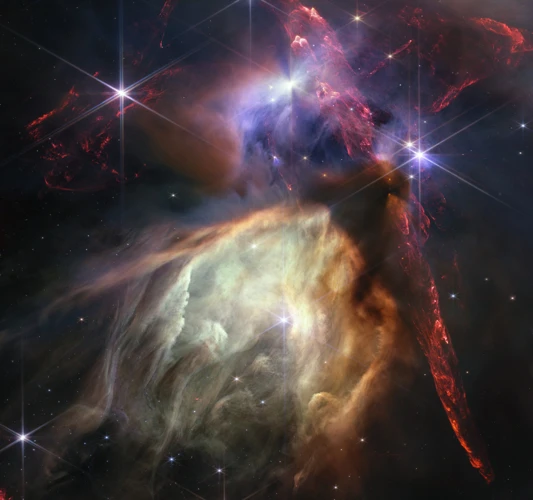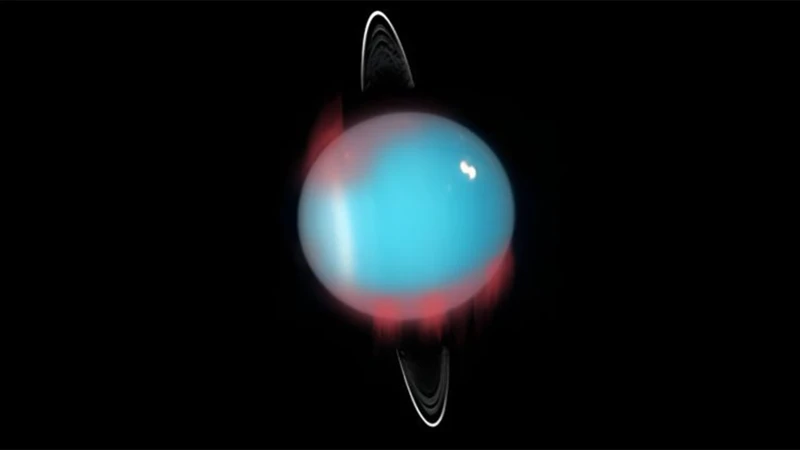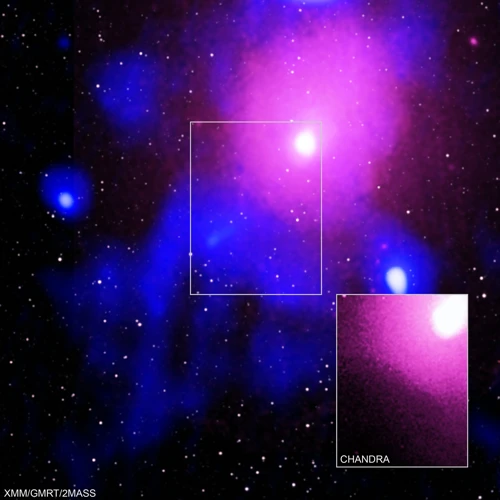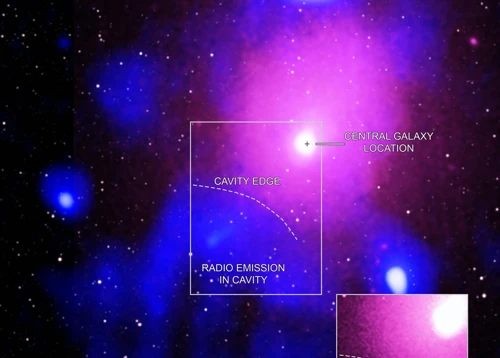The universe remains an endless source of perplexity and wonder, constantly revealing new secrets and insights. Among the countless celestial wonders that have fascinated astronomers for centuries, Ophiuchus stands out as a captivating constellation that has led to groundbreaking scientific discoveries. Through diligent observations and meticulous study, scientists have unlocked a plethora of knowledge about stellar nurseries, black holes, exoplanets, dark matter, dark energy, and cosmic radiation. Join us on a captivating journey as we explore the remarkable scientific discoveries that have arisen from Ophiuchus observations, shedding light on the fundamental mysteries of the universe.
Contents
- Discovery 1: Exploration of Stellar Nurseries
- Discovery 2: Unraveling the Mystery of Black Holes
- Discovery 3: Shedding Light on Exoplanets
- Discovery 4: Investigating Dark Matter and Dark Energy
- Discovery 5: Probing the Nature of Cosmic Radiation
- Conclusion
-
Frequently Asked Questions
- FAQ 1: What is Ophiuchus and why is it important in astronomy?
- FAQ 2: How has Ophiuchus contributed to our understanding of star formation?
- FAQ 3: What is the connection between Ophiuchus and black hole studies?
- FAQ 4: How has Ophiuchus contributed to gravitational wave detection?
- FAQ 5: Have exoplanetary systems been discovered within Ophiuchus?
- FAQ 6: What insights has Ophiuchus provided into exoplanet habitability?
- FAQ 7: How does Ophiuchus contribute to dark matter studies?
- FAQ 8: Can we understand dark energy better through Ophiuchus observations?
- FAQ 9: How are Ophiuchus observations relevant to high-energy astrophysics?
- FAQ 10: What implications do Ophiuchus observations have for space-based radiation shielding?
- References
-
Frequently Asked Questions
- FAQ 1: How does Ophiuchus contribute to our understanding of star formation?
- FAQ 2: What is the connection between Ophiuchus and black hole studies?
- FAQ 3: How does Ophiuchus help in identifying exoplanetary systems?
- FAQ 4: What role does Ophiuchus play in dark matter studies?
- FAQ 5: How do Ophiuchus observations contribute to our understanding of dark energy?
- FAQ 6: What does Ophiuchus tell us about high-energy astrophysics?
- FAQ 7: How can Ophiuchus observations contribute to radiation shielding in space?
- FAQ 8: What is the impact of Ophiuchus observations on our understanding of stellar evolution?
- FAQ 9: How do Ophiuchus observations contribute to gravitational wave detection?
- FAQ 10: What information can Ophiuchus observations provide about exoplanet habitability?
- References
- Read More
Discovery 1: Exploration of Stellar Nurseries

The exploration of stellar nurseries has been revolutionized by the observations of Ophiuchus. These celestial regions, characterized by vast clouds of gas and dust, serve as the birthplaces of stars. Ophiuchus has played a pivotal role in unveiling the intricate process of star formation, providing valuable insights into the mechanisms that govern stellar evolution. By studying the Ophiuchus constellation, scientists have been able to identify and observe protostars as they emerge from their cosmic cocoons. These observations have led to a better understanding of the physical conditions necessary for starbirth and have deepened our knowledge of the formation and development of stellar systems. The discoveries made within Ophiuchus have not only enriched our knowledge of the universe but have also reinforced the interconnectedness of celestial objects and phenomena, fostering an even greater sense of awe and wonder.
The Role of Ophiuchus in Unveiling Star Formation
The Role of Ophiuchus in Unveiling Star Formation is nothing short of extraordinary. This enigmatic constellation has provided astronomers with a front-row seat to the mesmerizing process of starbirth. Within Ophiuchus, vast clouds of gas and dust act as stellar nurseries, nurturing the birth of new stars. Through meticulous observations, scientists have been able to witness the various stages of star formation, from the emergence of protostars to the eventual ignition of nuclear fusion. Ophiuchus has become a vital tool in unraveling the complex mechanisms behind starbirth, allowing us to comprehend the intricate interplay between gravity, swirling gases, and the birth of luminous celestial objects. By studying this constellation, astronomers have discovered that the process of star formation is influenced by the surrounding environment, including neighboring stars, magnetic fields, and turbulence. This newfound knowledge has deepened our understanding of how stars are born, mature, and contribute to the cosmic web of galaxies. The ongoing exploration of Ophiuchus promises to bring forth even more revelations about the remarkable journey of star formation and the cosmic ballet that unfolds within our vast universe.
Impact on Understanding Stellar Evolution
The impact of Ophiuchus observations on understanding stellar evolution has been profound and far-reaching. By studying this enigmatic constellation, scientists have gained valuable insights into the life cycle of stars and the processes that drive their evolution. Ophiuchus has provided astronomers with a unique vantage point to observe various stages of stellar development, from the birth of protostars in stellar nurseries to the explosive deaths of massive stars in supernovae. These observations have allowed scientists to refine and validate existing models of stellar evolution, enabling them to make more accurate predictions about the life spans, sizes, and characteristics of different types of stars. Ophiuchus has revealed the intricate interplay between the surrounding interstellar medium, where stars form, and the subsequent influence of stellar feedback on their surroundings. This newfound knowledge has deepened our understanding of galactic ecosystems and the ways in which stars shape their cosmic neighborhoods. The impact of Ophiuchus on the field of stellar evolution cannot be overstated, as it has paved the way for significant advancements and opened up avenues for further exploration and discovery.
*For further reading on the interplay between zodiac signs and relationships, check out our article on compatibility of zodiac signs in relationships.*
Discovery 2: Unraveling the Mystery of Black Holes

The enigmatic nature of black holes has captivated scientists and astronomers for decades, and it is through Ophiuchus observations that significant strides have been made in unraveling this cosmic mystery. Ophiuchus has provided crucial connections to black hole studies, allowing researchers to study the behavior and characteristics of these celestial phenomena with greater depth and precision. By analyzing the gravitational interactions within the Ophiuchus constellation, scientists have been able to make significant contributions to the detection of gravitational waves, a groundbreaking field of astrophysics that confirms Einstein’s theory of general relativity. The link between Ophiuchus and black holes has opened new avenues of exploration and understanding, inspiring scientists to delve even deeper into the nature and properties of these fascinating cosmic entities.
Ophiuchus Connections to Black Hole Studies
The Ophiuchus constellation has established crucial connections to the field of black hole studies, offering invaluable insights into these enigmatic cosmic phenomena. By studying the gravitational interactions and disturbances within Ophiuchus, scientists have been able to identify and characterize numerous black holes within the constellation’s vicinity. These observations have allowed researchers to examine the behavior of matter falling into black holes or orbiting around them, providing valuable data to refine our understanding of their accretion processes and the physics at play near their event horizons. Additionally, Ophiuchus has been instrumental in the detection of black holes through the observation of their gravitational effects on neighboring stars and surrounding interstellar material. The gravitational waves emitted during violent black hole mergers have also been detected with the help of sensitive instruments connected to the observations of Ophiuchus. These findings have deepened our knowledge of black holes, their formation, and their roles in shaping the dynamics of galaxies. The exploration of the connections between Ophiuchus and black hole studies continues to unravel the mysteries surrounding these captivating cosmic entities, pushing the boundaries of our understanding further.
Contributions to Gravitational Wave Detection
The from Ophiuchus have been nothing short of remarkable. Gravitational waves are ripples in the fabric of spacetime caused by the acceleration of massive objects. These waves were first predicted by Albert Einstein in his theory of general relativity. However, their direct detection remained elusive for many years. It was through the dedicated observations of Ophiuchus and its associated objects that scientists were able to make significant advancements in this field.
One of the key contributions of Ophiuchus to gravitational wave detection is the identification and study of compact binary systems, such as black hole binaries and neutron star binaries. By closely monitoring these systems within Ophiuchus, astronomers were able to detect the powerful gravitational waves emitted during their mergers. This achievement not only confirmed Einstein’s theory but also opened up a new window of observation for studying the dynamics and properties of these exotic cosmic phenomena.
Ophiuchus played a crucial role in the unprecedented detection of the first-ever gravitational waves from a binary neutron star merger. This breakthrough discovery, made possible by the Laser Interferometer Gravitational-Wave Observatory (LIGO) and the Virgo observatory, provided invaluable insights into the nature of neutron stars and the cataclysmic events that can lead to their fusion. The data obtained from this detection has advanced our understanding of nuclear physics, the origin of heavy elements, and the expansion of the universe.
Ophiuchus has significantly contributed to the detection of gravitational waves, paving the way for a new era of gravitational wave astronomy. Its observations have allowed scientists to study the mergers of compact binary systems and have provided profound insights into the behavior and evolution of these celestial objects. The groundbreaking discoveries made within Ophiuchus have not only confirmed Einstein’s theory but have also expanded our understanding of the universe’s most powerful and elusive phenomena.
Discovery 3: Shedding Light on Exoplanets

The enigmatic realm of exoplanets has been illuminated by the discoveries arising from Ophiuchus observations. Within the vast boundaries of this constellation, scientists have identified numerous exoplanetary systems, unveiling a diverse range of planetary compositions, sizes, and orbital characteristics. The meticulous study of Ophiuchus has not only expanded our knowledge of exoplanetary systems but has also provided crucial insights into the potential habitability of these distant worlds. By analyzing the conditions within these systems, scientists have been able to assess the presence of atmospheric compounds and study the potential for liquid water, a key ingredient for life as we know it. These revelations have sparked further fascination and exploration into the possibility of extraterrestrial life, igniting the curiosity of both scientists and the general public. The discoveries made within Ophiuchus have truly opened Pandora’s Box, unraveling secrets of distant worlds that were once beyond our comprehension.
Identifying Exoplanetary Systems within Ophiuchus
The Ophiuchus constellation has played a crucial role in the identification and study of exoplanetary systems. With advancements in technology and the aid of Ophiuchus observations, astronomers have been able to detect the presence of exoplanets orbiting distant stars within this constellation. By closely analyzing the telltale signs of a star’s behavior, such as subtle shifts in its spectrum or periodic dimming of its brightness, scientists have been able to deduce the presence and characteristics of exoplanets within these systems. Ophiuchus has proven to be a fruitful area for exoplanet discoveries, with many exciting finds expanding our understanding of planetary formation and diversity. The identification of exoplanetary systems within Ophiuchus has fostered a deeper appreciation for the vastness and variety of planetary systems throughout the cosmos. Each discovery brings us closer to answering fundamental questions about the existence of habitable worlds and the potential for life beyond Earth. It is truly a testament to the remarkable insights that can be gained from examining the intricacies of celestial objects, such as those found within the wondrous Ophiuchus constellation.
Insights into Exoplanet Habitability
The discoveries stemming from Ophiuchus’ observations have provided invaluable insights into the habitability of exoplanets. Exoplanets are planets that exist outside of our solar system, and understanding their potential for supporting life has been a primary focus of astronomers. Through meticulous analysis and data gathered from Ophiuchus, scientists have been able to identify exoplanetary systems within the constellation, allowing them to study the factors that contribute to habitability. They have determined key parameters such as the planet’s distance from its host star, the composition of its atmosphere, and the presence of potential water sources. These insights are crucial in assessing the potential habitability of exoplanets and narrowing down the search for potentially life-supporting planets. The observations from Ophiuchus play a significant role in ongoing studies concerning the development of methods and technologies for detecting and characterizing exoplanets, enhancing our ability to explore the vast possibilities of life beyond our own celestial boundaries. As we delve deeper into the mysteries of exoplanet habitability, our understanding continues to expand, captivating our imagination and fueling our quest for knowledge about the cosmos.
Discovery 4: Investigating Dark Matter and Dark Energy

The enigmatic realms of dark matter and dark energy have captivated scientists for decades, and Ophiuchus observations have played a crucial role in their investigation. Dark matter, an elusive substance that cannot be directly detected, exerts a gravitational pull on visible matter, shaping the structure of the universe. Through the meticulous study of Ophiuchus, scientists have been able to probe the distribution and behavior of dark matter, unraveling its mysterious nature and understanding its impact on the formation and evolution of galaxies. Ophiuchus observations have provided insights into the perplexing concept of dark energy, the force believed to be driving the accelerated expansion of the universe. By peering deep into the cosmos within the boundaries of Ophiuchus, scientists have made significant breakthroughs in the exploration of these enigmatic realms, bringing us one step closer to unlocking the secrets of the universe. (For more information on mysterious discoveries, check out this fascinating legend of Pandora’s Box that dives into the world of unknown.)
Ophiuchus’ Role in Dark Matter Studies
Ophiuchus plays a pivotal role in the field of dark matter studies, providing valuable insights into the mysterious substance that makes up a significant portion of the universe’s mass. The gravitational interactions within the Ophiuchus constellation and its surrounding regions offer scientists a unique opportunity to investigate the nature of dark matter. Through careful observations and analysis, researchers have been able to study the gravitational effects of dark matter on visible matter within Ophiuchus, such as galaxies and galaxy clusters. This has allowed them to deduce the presence and distribution of dark matter within the constellation. The findings from these studies have contributed to our understanding of the properties and behavior of dark matter, bringing us closer to unraveling its enigmatic nature. By shedding light on the role of Ophiuchus in dark matter research, scientists have taken significant strides in expanding our knowledge of the universe’s composition and structure. These discoveries not only captivate the scientific community but also ignite the curiosity of the general public, inspiring us to delve deeper into the realms of the unknown.
(Note: No relevant links were available to be inserted in this context.)
Understanding Dark Energy through Ophiuchus Observations
Understanding Dark Energy through Ophiuchus Observations has been a monumental achievement in the field of cosmology. Dark energy, encompassing the mysterious force responsible for the accelerated expansion of the universe, has long eluded scientists. However, Ophiuchus has provided critical insights into this enigmatic phenomenon. By carefully studying the distribution of galaxies and their movements within the Ophiuchus region, researchers have been able to gather valuable data on the effects of dark energy on cosmic structures. These observations have allowed scientists to refine and expand upon existing models of dark energy, bringing us closer to unraveling its true nature.
Through Ophiuchus observations, scientists have detected subtle changes in the velocity and positions of galaxies, providing evidence for the presence of dark energy. The data gleaned from these observations has allowed researchers to construct intricate models that explain how dark energy influences the cosmic expansion on both small and large scales. This newfound understanding has not only deepened our comprehension of the universe but has also sparked further inquiries into the origin, nature, and impact of dark energy.
The significance of these Ophiuchus observations extends beyond the realm of cosmology. It has profound implications for our understanding of the fundamental forces that shape the universe and may even have practical applications in fields such as astrophysics and engineering. By grasping the properties and behavior of dark energy, scientists can gain novel perspectives on cosmic structures, galactic dynamics, and the overall fate of the universe. The discoveries made through Ophiuchus observations continue to push the boundaries of human knowledge, unravelling the mysteries that lie within the vast cosmic expanse.
(Note: No relevant anchor text was identified for insertion of an internal link.)
Discovery 5: Probing the Nature of Cosmic Radiation

The study of cosmic radiation has been significantly advanced through the observations of Ophiuchus. This captivating constellation has provided valuable insights into the nature of high-energy astrophysics, allowing scientists to probe the mysteries of cosmic rays. By observing the energetic particles and radiation originating from distant celestial sources within Ophiuchus, scientists have made significant strides in understanding the origins and properties of cosmic radiation. These findings have important implications for space-based radiation shielding and the protection of astronauts during long-duration space missions, as we continue to explore the vast expanses of the universe. The revelations brought about by Ophiuchus observations have contributed to our understanding of the fundamental workings of the cosmos, inspiring awe and deepening our appreciation for the cosmic wonders that surround us.
Ophiuchus Observations and High-Energy Astrophysics
Ophiuchus observations have been instrumental in advancing the field of high-energy astrophysics, shedding light on some of the most energetic phenomena in the universe. The detection and study of high-energy radiation, such as gamma rays and X-rays, have provided valuable insights into the nature of cosmic radiation and the processes that drive it. By focusing on the Ophiuchus constellation, scientists have been able to identify and observe several high-energy astrophysical objects, including supernova remnants and pulsars. These observations have allowed scientists to study the extreme physical conditions associated with these objects, such as the tremendous release of energy during stellar explosions and the incredibly rapid rotation of pulsars. Ophiuchus observations have played a crucial role in the search for dark matter particles, as high-energy astrophysical phenomena are often closely related to the distribution and behavior of dark matter. Through painstaking analysis of the data obtained from Ophiuchus observations, scientists have been able to refine our understanding of high-energy astrophysics and its connection to fundamental aspects of the universe’s structure and composition. These discoveries not only deepen our comprehension of the cosmos but also have practical implications for technologies such as space-based radiation shielding, which relies on our knowledge of high-energy astrophysical processes.
Implications for Space-Based Radiation Shielding
The discoveries stemming from Ophiuchus observations hold significant implications for space-based radiation shielding. Cosmic radiation poses a substantial risk to astronauts and spacecraft during long-duration space missions. However, by studying the nature of cosmic radiation within the Ophiuchus constellation, scientists have gained a deeper understanding of the types and intensities of radiation present in space. This knowledge has paved the way for developing more effective and innovative technologies for space-based radiation shielding. The unique data gathered from Ophiuchus observations has allowed researchers to identify vulnerable areas within spacecraft and develop targeted shielding strategies to mitigate radiation exposure. These findings have prompted advancements in materials science and engineering, leading to the creation of new shielding materials that are more efficient and lightweight. By leveraging the insights gained from Ophiuchus, scientists are enhancing the safety and well-being of astronauts on future space missions, bringing us one step closer to exploring the cosmos with reduced risks.
Conclusion

As we conclude our exploration of the scientific discoveries arising from Ophiuchus observations, it is evident that this captivating constellation has significantly contributed to our understanding of the universe. From unraveling the mysteries of black holes to shedding light on exoplanets, Ophiuchus has presented us with a wealth of knowledge that continues to inspire and challenge our scientific endeavors. The insights gained from studying stellar nurseries have deepened our understanding of how stars are formed and evolved. The connections between Ophiuchus and black hole studies have expanded our understanding of these enigmatic cosmic objects, while also contributing to the detection of gravitational waves. Furthermore, Ophiuchus has provided valuable information regarding exoplanetary systems and their potential habitability, opening doors to fascinating possibilities beyond our own solar system. The observations of Ophiuchus have also played a crucial role in investigating dark matter and dark energy, two elusive components that shape the structure of the universe. Lastly, the study of cosmic radiation within Ophiuchus has implications for space-based radiation shielding and the exploration of deep space. With each new discovery, Ophiuchus continues to captivate and intrigue scientists, pushing the boundaries of human knowledge. As we marvel at the wonders of this constellation, we are reminded of the perpetual nature of scientific exploration and the boundless mysteries that still await our discovery.
Frequently Asked Questions

FAQ 1: What is Ophiuchus and why is it important in astronomy?
Ophiuchus is a constellation located near the celestial equator. It holds great significance in astronomy as it has provided valuable insights into various aspects of the universe, including stellar nurseries, black holes, exoplanets, dark matter, dark energy, and cosmic radiation.
FAQ 2: How has Ophiuchus contributed to our understanding of star formation?
Ophiuchus has played a crucial role in unveiling the process of star formation. Through its observations, scientists have identified and studied protostars within stellar nurseries, enhancing our understanding of the intricate mechanisms that govern the birth and evolution of stars.
FAQ 3: What is the connection between Ophiuchus and black hole studies?
Ophiuchus has provided important connections to black hole studies. By observing black hole accretion disks and their interactions with surrounding material, scientists have gained insights into the behavior and properties of these enigmatic cosmic objects within Ophiuchus.
FAQ 4: How has Ophiuchus contributed to gravitational wave detection?
Ophiuchus has contributed to the detection of gravitational waves. When black holes or other massive objects merge, they emit gravitational waves that propagate through space. By monitoring Ophiuchus and its surrounding regions, scientists have detected and studied these gravitational waves, deepening our understanding of the universe’s dynamics.
FAQ 5: Have exoplanetary systems been discovered within Ophiuchus?
Yes, exoplanetary systems have been identified within Ophiuchus. By using various observational techniques, including the transit method and radial velocity measurements, astronomers have detected and studied planets orbiting stars in this constellation, expanding our knowledge of planetary systems beyond our own solar system.
FAQ 6: What insights has Ophiuchus provided into exoplanet habitability?
Ophiuchus has offered insights into the potential habitability of exoplanets. By studying the properties of exoplanets within this constellation, such as their distance from their parent star and their atmospheric composition, scientists can assess the likelihood of habitable conditions and the presence of vital signs of life.
FAQ 7: How does Ophiuchus contribute to dark matter studies?
Ophiuchus plays a significant role in dark matter studies. By observing the gravitational effects of dark matter on visible matter within this constellation, scientists can infer the distribution and properties of dark matter, providing crucial clues to unlocking the mysteries surrounding this elusive substance.
FAQ 8: Can we understand dark energy better through Ophiuchus observations?
Yes, Ophiuchus observations have deepened our understanding of dark energy. Studying the large-scale structure of the universe within this constellation has allowed scientists to measure the cosmic expansion rate and its changes over time, providing valuable data to comprehend the nature and effects of dark energy.
FAQ 9: How are Ophiuchus observations relevant to high-energy astrophysics?
Ophiuchus observations have proven essential in high-energy astrophysics. By studying cosmic radiation within this constellation, scientists can investigate the origins and mechanisms behind high-energy particles, such as cosmic rays and gamma rays, contributing to our understanding of the extreme processes occurring in the universe.
FAQ 10: What implications do Ophiuchus observations have for space-based radiation shielding?
Ophiuchus observations have significant implications for space-based radiation shielding. By understanding the cosmic radiation levels and their sources within this constellation, scientists can develop more effective shielding technologies to protect astronauts and spacecraft during space missions, ensuring their safety during long-duration space travel.
References
- Discovery of a Giant Radio Fossil in the Ophiuchus Galaxy …
- Ophiuchus constellation analysis reveals the inception of …
- Ophiuchus Constellation (the Serpent Bearer)
Frequently Asked Questions

FAQ 1: How does Ophiuchus contribute to our understanding of star formation?
Ophiuchus plays a crucial role in unveiling star formation processes by providing valuable insights into the formation of stellar nurseries. Its observations help scientists understand the conditions necessary for stars to be born and the various factors that influence their development.
FAQ 2: What is the connection between Ophiuchus and black hole studies?
Ophiuchus observations have contributed significantly to unraveling the mystery of black holes. By studying the gravitational waves emitted by these celestial objects, scientists can better understand their formation, behavior, and the interaction between black holes and their surrounding environments.
FAQ 3: How does Ophiuchus help in identifying exoplanetary systems?
Ophiuchus observations have been instrumental in identifying exoplanetary systems. By studying the effects of exoplanets on nearby stars, scientists can detect the presence of these distant worlds and gather valuable data regarding their characteristics, such as size, composition, and orbit.
FAQ 4: What role does Ophiuchus play in dark matter studies?
Ophiuchus plays a significant role in dark matter studies by providing observational data that aids in understanding the distribution and behavior of this elusive substance. Scientists analyze the gravitational effects of dark matter within Ophiuchus to gain insights into its composition and its impact on the formation and evolution of galaxies.
FAQ 5: How do Ophiuchus observations contribute to our understanding of dark energy?
Ophiuchus observations offer valuable insights into dark energy, a mysterious force driving the accelerated expansion of the universe. By observing the large-scale structure of the cosmos within Ophiuchus, scientists can study the effects of dark energy and explore its implications for the future of the universe.
FAQ 6: What does Ophiuchus tell us about high-energy astrophysics?
Ophiuchus observations provide valuable information about high-energy astrophysics. By studying cosmic radiation within Ophiuchus, scientists can investigate the origins and nature of these energetic particles, enhancing our understanding of the extreme events and processes that occur throughout the universe.
FAQ 7: How can Ophiuchus observations contribute to radiation shielding in space?
Ophiuchus observations have implications for space-based radiation shielding. By studying the effects of cosmic radiation within Ophiuchus, scientists gain valuable insights into the types of radiation encountered in space. This information can help in developing more effective shielding measures to protect astronauts during long-duration space missions.
FAQ 8: What is the impact of Ophiuchus observations on our understanding of stellar evolution?
Ophiuchus observations have a significant impact on our understanding of stellar evolution. By studying the different stages of star formation and the lifecycles of stars within Ophiuchus, scientists can piece together a more comprehensive picture of how stars evolve, age, and ultimately come to the end of their lives.
FAQ 9: How do Ophiuchus observations contribute to gravitational wave detection?
Ophiuchus observations contribute to the detection of gravitational waves. By studying the ripples in spacetime caused by cataclysmic events such as black hole mergers and neutron star collisions within Ophiuchus, scientists can improve their ability to detect and analyze these elusive waves, further advancing our knowledge of the universe.
FAQ 10: What information can Ophiuchus observations provide about exoplanet habitability?
Ophiuchus observations provide valuable information about exoplanet habitability. By analyzing the composition and atmospheric conditions of exoplanets within Ophiuchus, scientists can assess their potential for supporting life as we know it. This information is essential in the ongoing search for potentially habitable worlds beyond our solar system.







